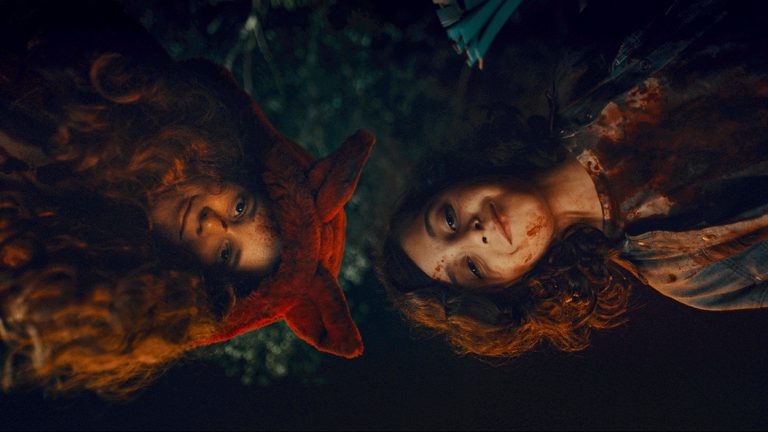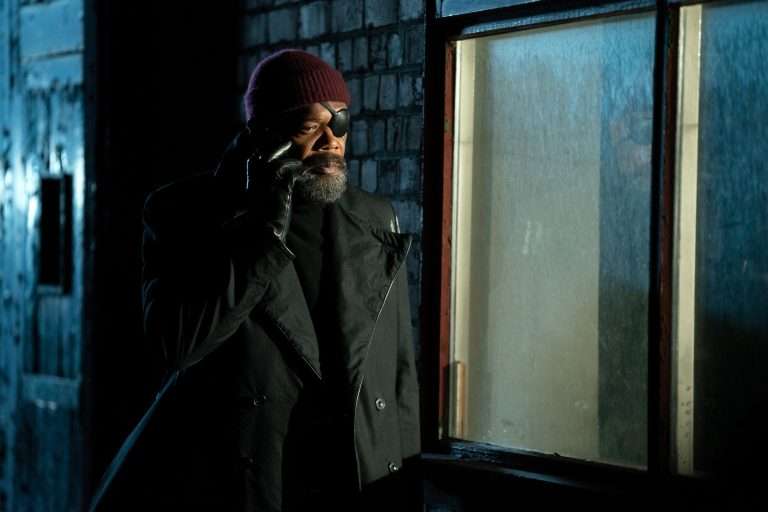Inside (2023): Around a year ago, Steven Soderbergh surprised everyone with his small budget claustrophobic crime-thriller, “Kimi.” The film, made during the COVID lockdown, made the best use of its minimalistic setting and genre conventions. Now, just around the same time of the year, we have Vasilis Katsoupis’s promising feature, “Inside,” that ticks off similar genre beats, albeit with an altogether different context.
The movie stars Willem Dafoe in a role that yet again asks the actor to extract the last bits of his commanding physicality. He plays Nemo, an art thief with his own unfulfilled ambitions who finds himself in a trapped thriller. The film, for the most part, plays out in the penthouse he finds himself locked into.
However, there are plenty of interesting ideas and adroit dichotomies that the screenplay plays around with. It all culminates into one of Dafoe’s best performances in years and an ending that surely deserves to be discussed. Let’s take a look at what the film might be trying to say and what it thematically embodies about an artist’s journey.
Inside (2023) Movie Plot Synopsis & Summary:
Right at the start of the film, we see Nemo make his way inside an isolated hi-tech penthouse in a posh neighborhood of New York. Equipped with the necessary items, he’s there to steal some pieces of art, which includes a costly self-portrait of the owner. But soon, before Nemo could even get a sense of the wide spatial space around him, the door in the balcony through which he came in shuts and locks itself down. Ditto for the massive main door at the front.
His friend over the radio tells Nemo how he’s now on his own, leaving the latter standing by himself, overwhelmed by the blaring alarms. Annoyed by it, Nemo rushes himself to the speakers and cuts the wire, but now he’s left with all connections off. The consequence of this begins to seep onto Nemo, who now is left alone with no one in sight, swinging between temperature extremes due to a thermostat that seems as broken as his conscience.
In other words, Nemo is stuck, well, inside both the confines of a penthouse as well as the unfulfilled artistic confinements of his own mind. Will he be able to find an escape route? Or would he be stuck inside for months and seasons?
How Long Is Nemo Stuck Inside?
For the initial few days, the inside becomes unbearably hot because of the broken thermostat, and the issue is even exacerbated by the plumbing system not working at all. The hi-tech refrigerator keeps playing “Macarena” every time its doors are opened, leaving Nemo with less and less food supply to rely on. The same recurring motif narratively helps us get a sense of time passing as the wide spaces of the penthouse gradually begin to impose on Nemo’s psychological state.
The giant windows of the place seem unbreakable as we watch Nemo make multiple futile attempts at cracking them open. A sense of wealth and luxury surrounds him, and yet the same ultimately turns into a nightmare for him. There are worse places to be trapped in for days and weeks than a massive penthouse, but it’s precisely such stark juxtapositions through which the filmmaking slowly helps resurface the movie’s central theme.
Who is Jasmine? Is She Able to Help Nemo Out?
As mentioned earlier, there’s nothing but CCTV cam footage playing on the TV that would connect Nemo to the outside world. Slowly, he begins to notice the people in it so well that he ends up becoming obsessed with their mundane routines.
There’s also a housekeeper named Jasmine (Eliza Stuyck), who Nemo particularly develops a keen eye for; any time Jasmine comes outside the main door, Nemo tries his best to draw her attention by creating loud commotions. But the door seems so thick that the noise doesn’t even penetrate it, leaving even the minuscule hopes crushed.
One day, while Nemo is searching through different parts of the penthouse, he eventually stumbles upon a hidden room behind a narrow coat cabinet. This leads him to a mysterious room behind the walls, one that is lit in strange-colored light, illuminating the hallway. It’s here where Nemo finally sees the self-portrait he had come to steal but finds himself suddenly suffering a headache (or a delusion) while staring at it.
Once he recovers, he goes deeper into the area and finds yet another room with the body of the owner sprawled out like a corpse. However, it’s not an actual body, or so it seems. Nemo tosses it off the countertop after he realizes that it’s just a rubber body that was probably placed there as an art piece of sorts. Thus, he then carries the self-portrait back with him into the penthouse.
The Blurring of Reality Reinforced by the Struggle of an Artist:
The owner of the penthouse called the hidden chamber where Nemo finds the self-portrait from, ‘the unseen world.’ Along with the portrait, Nemo also finds a manuscript of “The Marriage of Heaven and Hell,” – a book written by renowned English writer William Blake.
The rest of the plot revolves around this crucial book, as it soon dawns upon both the viewer as well as the audience that the manuscript was the most prized possession of the owner’s life. In fact, the realization of it affects Nemo so much that he even dreams of meeting the owner at an art gallery, entering it through a gateway lit in ethereal light.
In the dream, the owner appreciates Nemo for living up to the challenge, and it’s here when the former realizes that he was the puppet the owner was describing all along. Everyone else around, including the young Jasmine, was an actor fixed for the challenge.
The motivation that gets Nemo to actively find an escape later comes out of the desperation of him wanting to break away from this destined challenge. When Nemo wakes up from his sleep, he becomes all the more determined to challenge destiny. What we see then is an artist determined to challenge himself.
This even reflects in his choice of eating the fish out of the aquarium just to keep himself alive. But at the same time, Nemo also actively starts sketching onto the walls of the penthouse. In fact, he even begins to carry out one-man shows and stage acts that put him on full display.
Nemo’s Descent into Madness:
After discovering the portrait, Nemo descends into further madness as he finds it difficult to maintain his sanity. Along with him, the lines of reality start to blur even for the audience, as we constantly watch Nemo’s situation become more and more hopeless. He even suffers from severe health problems, something that hits home even harder with Dafoe’s terrific acting. Due to a lack of nutrition, Nemo begins experiencing dangerous manic episodes and hallucinations.
The most horrifying out of such episodes, though, comes when he’s seen dealing with some sort of tooth decay and suddenly sees the owner standing right behind him. Nemo falls over the basin by slamming his head into the counter, and we get a harrowing overhead shot of him lying down there.
Thus, at this point in the film’s third act, we clearly begin to see how Nemo’s mind has started to drift away from reality. The same is verbally reinforced when Nemo is later seen reading out the texts from the manuscripts he had gotten hold of earlier. The passage that he keeps repeating talks of heaven and hell and the road leading to it, which starts to evoke some eerie behavior.
Does the Plan for the Fire Alarm work?
In the movie’s last act, Nemo, after having suffered a hit to his head, lies on the floor right when he notices something on the ceiling: a fire alarm. Then, by using shredded pieces of paper and other items scattered around the penthouse, Nemo lights a fire by reflecting the sunlight onto them.
What follows is yet another striking scene that encapsulates the film’s core theme of a man’s primitive instincts and his everlasting struggles with art and invention; Nemo lights a torch and, in his shredded clothes, walks toward the fire alarm through the narrowed hallway. Alerting the trigger system, the fire sets off the alarm and activates the sprinkler system in the entire penthouse. One would at least expect this to work, right? But alas, the idea makes things even worse.
After yet another failed attempt at escaping, Nemo now begins to get himself past through a glass frame on the ceiling but finds himself already too exhausted. Plus, there are even metal bolts that he can’t get off, which leaves him even more frustrated. As a result of this, Nemo ends up falling to the floor and breaks his leg.
The fall, literally and metaphorically, solidifies his descent into complete madness. We then watch him talk with a pigeon, one that he thinks has met the same fate as his but still finds himself separated from through the thick mirror. Later, he finally decides to start covering the wall with his own art.
Inside (2023) Movie Ending, Explained:
Does Nemo Escape the Penthouse?
With his leg broken, his mental state falling to the abyss, and the food supply coming to an end, Nemo is left with no hope. At this point, he’s sketched an entire wall with his skills while acknowledging that his death in the apartment now seemed inevitable. Even his last hope of the fire alarm didn’t seem to work.
With no hope in sight, Nemo leaves a note addressing the owner of the place, stating how his home needs destruction. While carving the words over the wall, he affirms how all art is born out of destruction. A wide shot of the apartment displaying his art – born out of the very chaos and destruction that we see throughout the film – then reaffirms Nemo’s struggle with his own self.
He then climbs up his tower to reach the glass on top of the ceiling one last time. The panel fixed over it crashes to the ground, off camera, almost like the film was trying to let Nemo claim this moment for himself. Narrative-wise, this makes sense as it leaves the film’s last frame open to interpretation.
Meanwhile, in the narration from the opening of the film, Nemo talks about his endearing love of art and how it would be the first thing he would save from a hypothetical scenario of a fire replaying again.
Thus, “Inside” reaches a full circle by its end, with the three paintings and the self-portrait being saved, but probably at the cost of something. Whether Nemo escaped through the glass frame by unscrewing the metal bolts or succumbed to his death after carving a masterpiece out of his own lived experience remains for you to decide.






